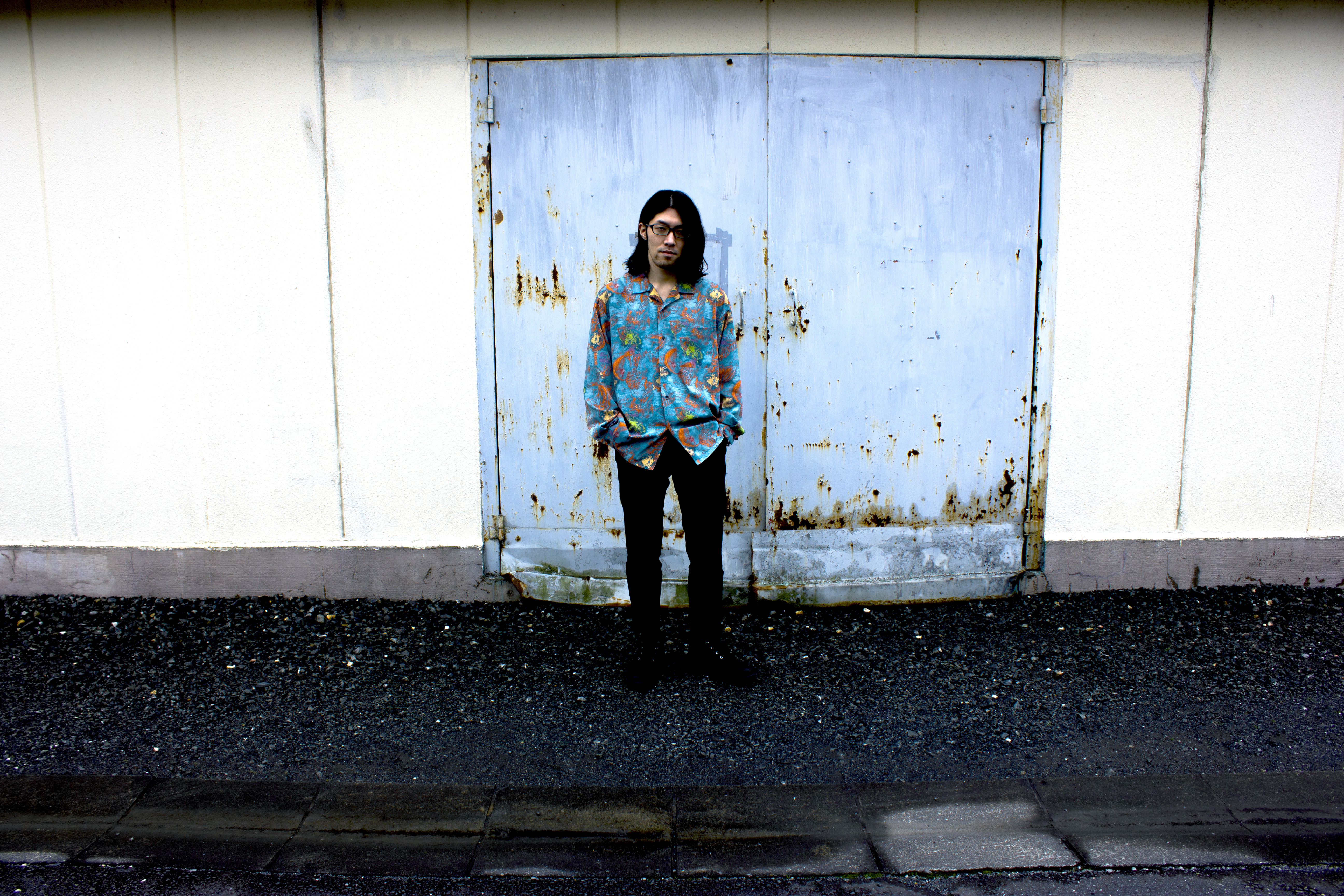
The works of Naoya Hirata, created by assemblaging materials collected from the Internet in a virtual space, are, according to him, "sculptures. He says, "I am doing traditional sculptures," and we talked about his methodology and works that update sculptures that are neither thick nor heavy, and whose existence is dependent on being fixed in space. Hirata-san, you create sculptures in virtual space. These are sculptures that have no thickness, no weight, no conventional spatial scale. You are aware that your activities are only as a "sculptor," aren't you? -Consciously speaking, I call myself a sculptor and an artist. My main focus is to pursue "form" and to consider contemporary views of the history of sculpture. What I am actually doing, at least in my mind, is no different from the people who have been doing sculpture for a long time. I am making forms, but the only difference is that my approach is in the world of virtual space.
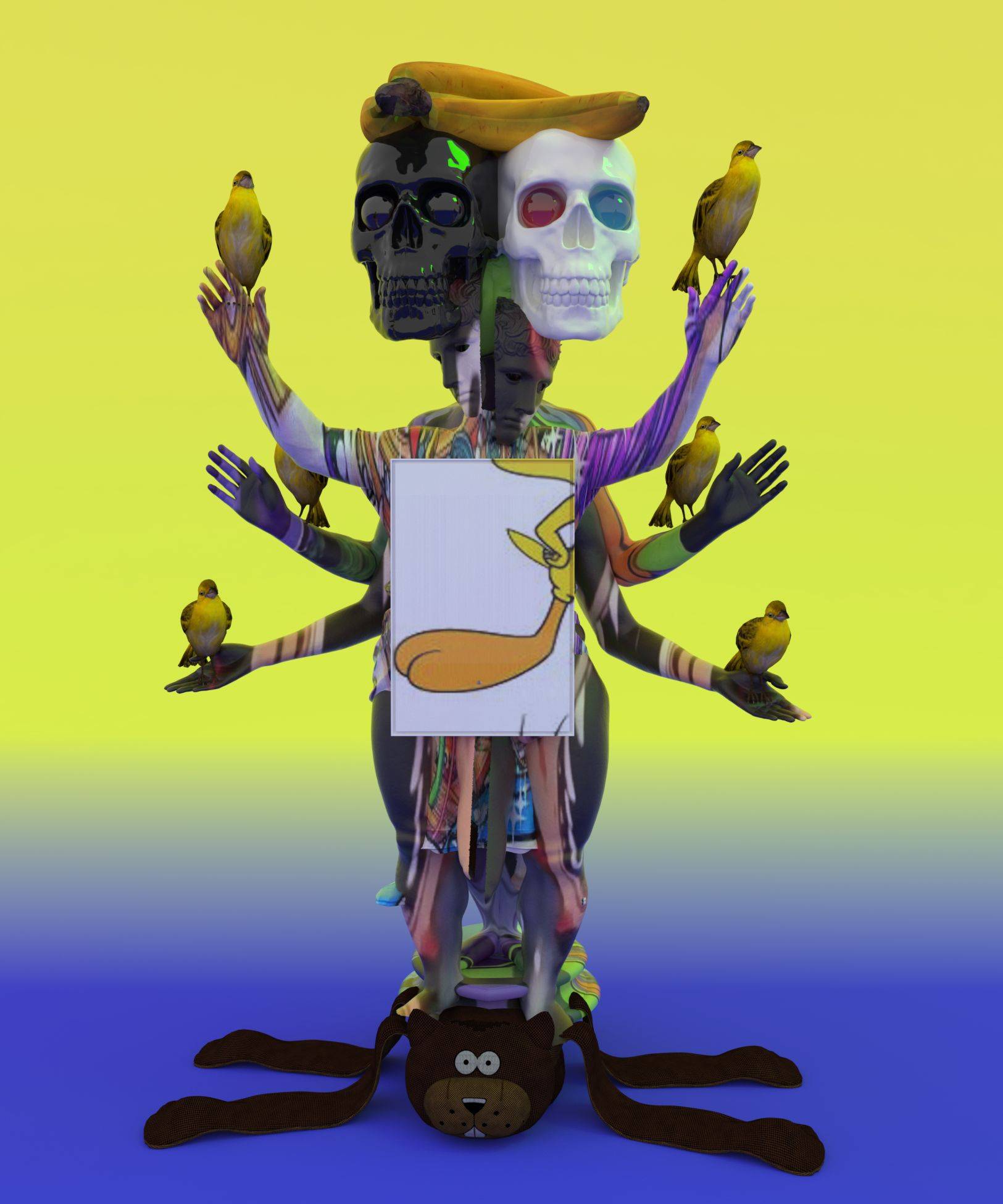
The Prophet 33 x 27.5 cm I associate sculpture with a genre that is subject to the limitations of materials and space, but did that filter get in the way? -To be honest, I wasn't sure at first why I was using video as my current style of output. When I'm not sure, it's usually because I don't have enough information. I read a lot of books, and the teacher who taught me said, "Sculpture is something that involves time and space. If we take this temporalization and spatialization as the elements of sculpture, then what I am doing satisfies the requirements of sculpture. The current output of my work is in the form of video and two-dimensional images, and I think that the way I output these images is suitable for my own sculptural expression. But where did you get the idea of sculpting in a virtual space? -I started working digitally around my fourth year of undergraduate school. I saw one of my older students playing with 3DCG software, and I immediately thought, "This is it. I thought it would solve my problems at the time, and more importantly, I had a hunch that I could make sculptures with it. But actually, there was a time when I was working with live-action images before that. At the school I attended, we were given a free production period in the third year, but I had a problem with the materials at that time. In other words, I didn't have the funds to obtain the materials. Sculpture is expensive, and when I was faced with that problem, most of the materials I wanted to work with were excluded.
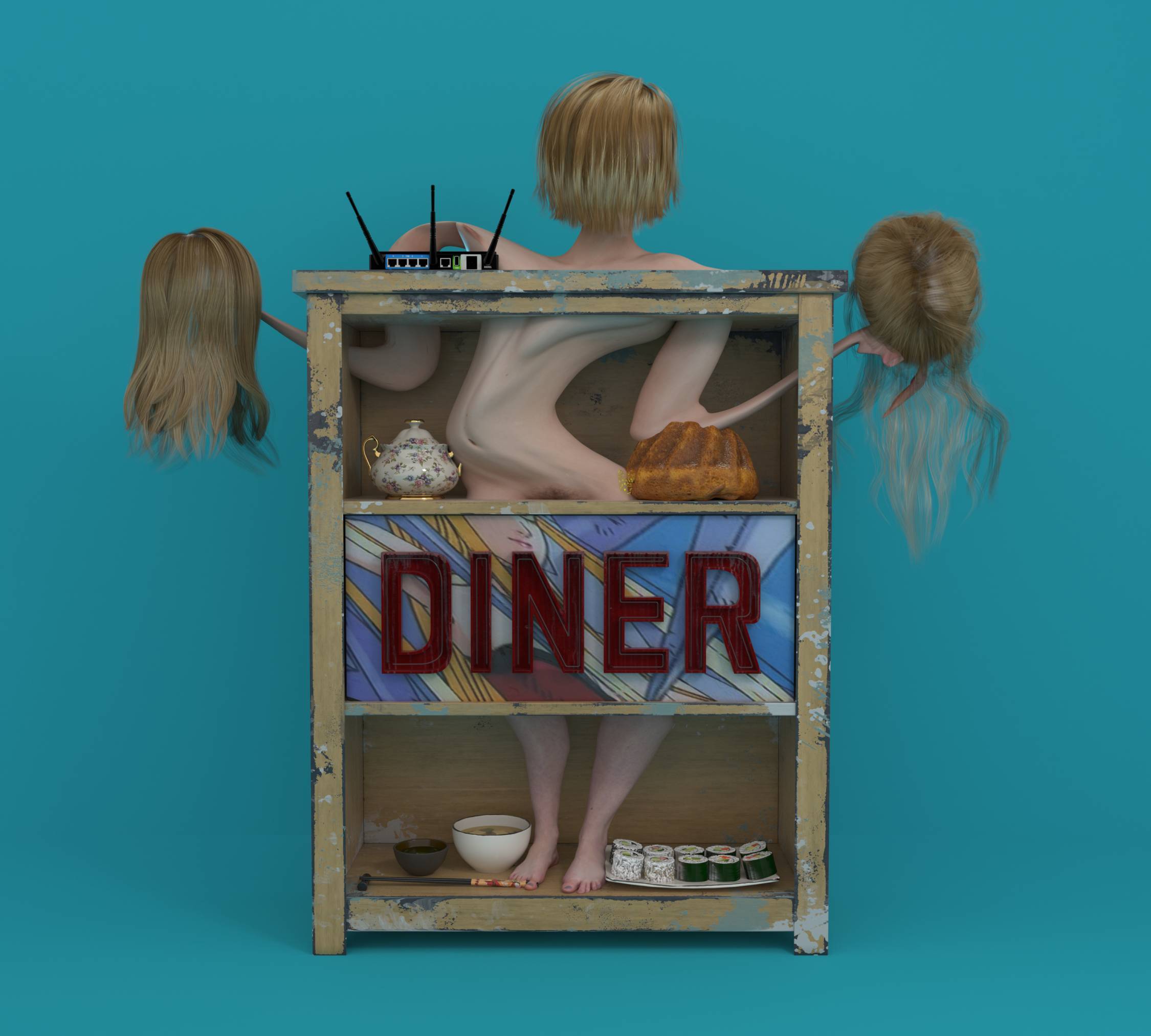
DINER 33 x 36.6cm And the solution was video? -Yes, exactly. I vaguely remember that Matthew Barney, who influenced me at the time, referred to his video works as sculptures, and I thought, "I see. In other words, as long as I could maintain the sculptural quality, there were no limitations on my output. So I gave it a try, but the quality was poor. I was disappointed in myself. At the same time, I thought, "This is not good enough. I had always admired foreign artists, and I wanted to create works of that level. In the meantime, I came across this 3DCG software, and it was just like, "This is it. Your works are created by gathering materials from online, in other words, by using digital ready-made materials in a collage-like composition. What is your intention in this regard? -It wasn't so much an intention as it was a matter of method at first. I don't think I'm doing anything different from a conventional sculptor, but when you create a sculpture digitally, it becomes difficult to draw a line between it and existing movies or games. In other words, the challenge was how to make the work work work in the context of contemporary art.
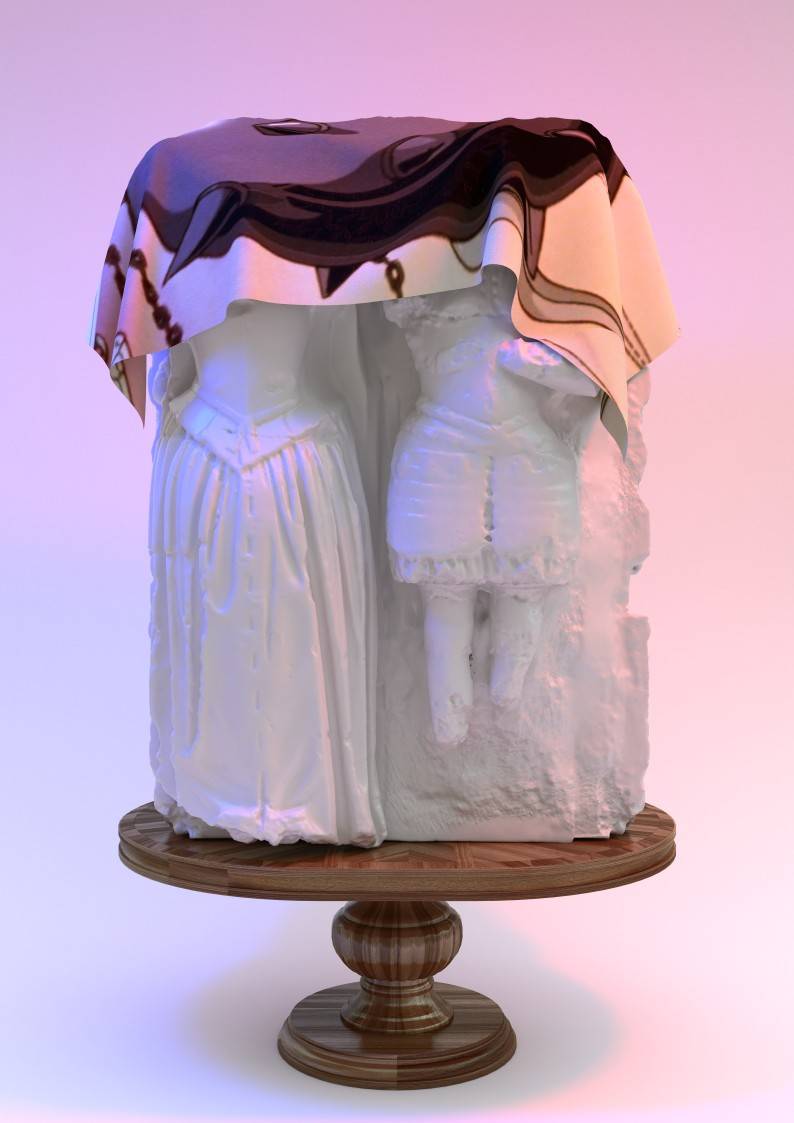
Ouija #2 (The Grantham Tomb) 118.9 x W 84.1cm This is a sculpture. -Yes, the method was assemblage. In the real world, the materials used disappear from their original place as material, but in the digital world, they are basically copies, so they do not disappear. However, in the case of digital technology, it is basically a copy, so it does not disappear. The materials used remain somewhere in this world. That is interesting. In other words, my work is a mishmash of things that I don't know when or who created them somewhere in the world. In a way, they seem to be the crystallization of modern information. Once I realized that, it became less difficult to construct a context. Is your sense of reality in digital media partly due to your generation's parallel growth of the Internet? -It is true that for me, stones and wood may be more distant. My generation, including myself, has grown up at the same time as the Internet. Just as nature and cities were for people of a certain era. We were the generation that had video games from the time we were born, and the Internet, and the online world was built. So we are familiar with the virtual, and we can treat it as a parallel entity. It's a material that can be seen in the same row as steel and stone.
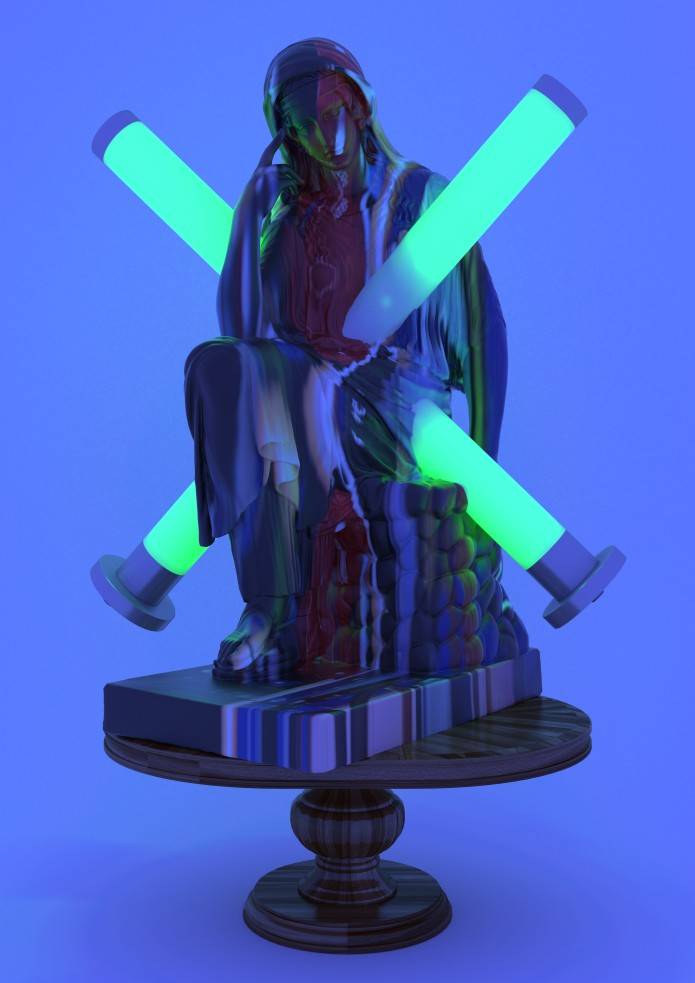
Ouija #5 (Penelope) 118.9 x 84.1cm It's just that the place where the material exists is different from, say, iron. -That's exactly right. The materials I work with exist in a different place, in a different dimension, than wood. As information, it is located in a place called the Internet around the world. That's the only point. The approach to my work and its own origins are in line with tradition, but virtual space and other digital terms and methods are quite topical and tend to be singled out. The information that exists in a real space and a virtual space is different, isn't it? Where is the update of your sculptures in terms of weight and touch? -Whether it is an update or not, my works have no thickness at all. My sculptures are empty on the inside. This is something that has never happened before. There has never been a sculpture that did not have thickness. For that reason, or perhaps because of it, I need to focus on the surface, which is an important point for sculpture, but I think I can and will be able to stand on a new plane as a way of being. The main body of my work is in a virtual space, and the output planes and images on display are avatars of that space, or in Platonic terms, projections of ideas. What I can pursue as a form-maker after suppressing the multiple elements will be my future challenge.